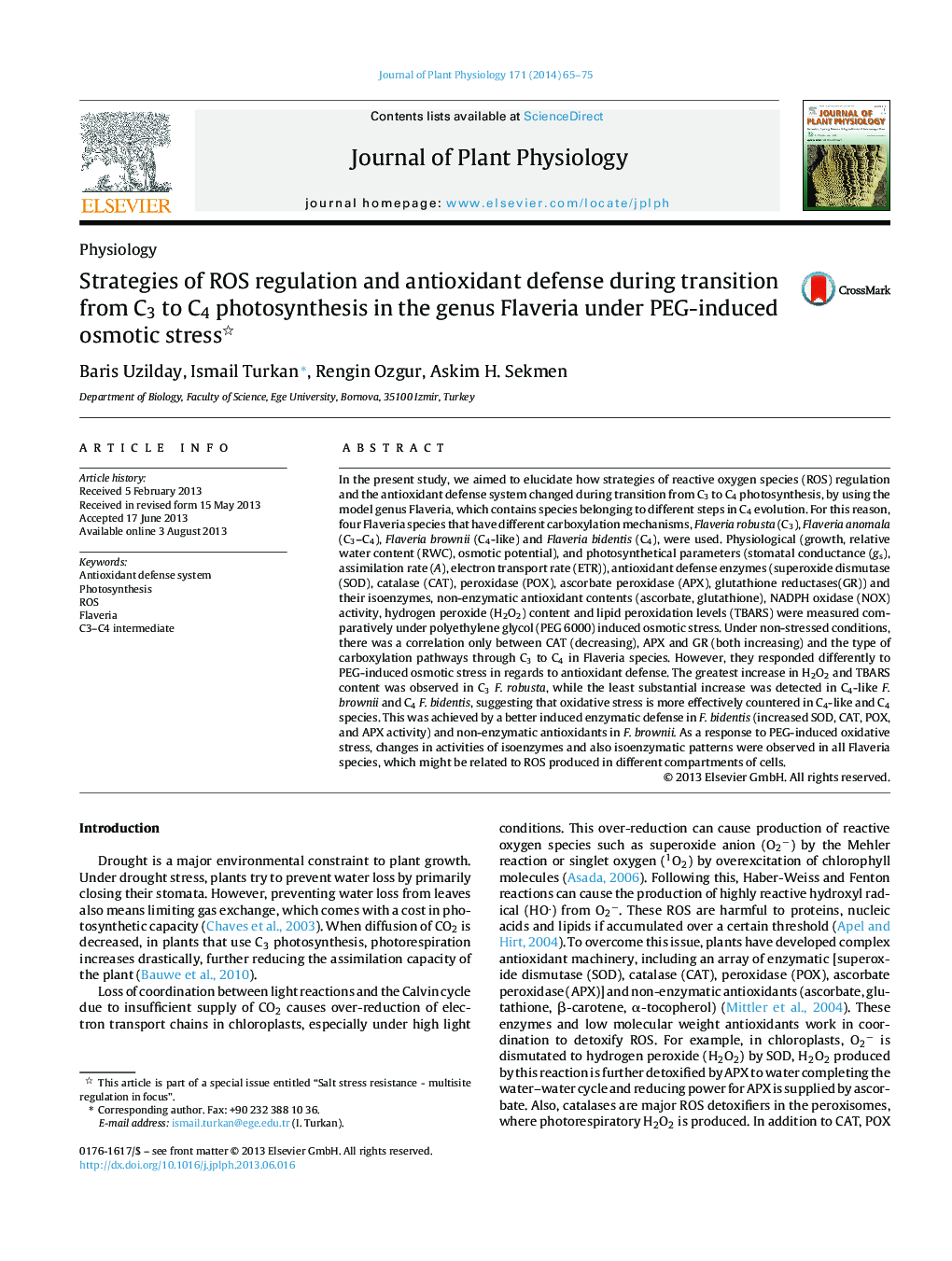| کد مقاله | کد نشریه | سال انتشار | مقاله انگلیسی | نسخه تمام متن |
|---|---|---|---|---|
| 2055911 | 1075788 | 2014 | 11 صفحه PDF | دانلود رایگان |

In the present study, we aimed to elucidate how strategies of reactive oxygen species (ROS) regulation and the antioxidant defense system changed during transition from C3 to C4 photosynthesis, by using the model genus Flaveria, which contains species belonging to different steps in C4 evolution. For this reason, four Flaveria species that have different carboxylation mechanisms, Flaveria robusta (C3), Flaveria anomala (C3–C4), Flaveria brownii (C4-like) and Flaveria bidentis (C4), were used. Physiological (growth, relative water content (RWC), osmotic potential), and photosynthetical parameters (stomatal conductance (gs), assimilation rate (A), electron transport rate (ETR)), antioxidant defense enzymes (superoxide dismutase (SOD), catalase (CAT), peroxidase (POX), ascorbate peroxidase (APX), glutathione reductases(GR)) and their isoenzymes, non-enzymatic antioxidant contents (ascorbate, glutathione), NADPH oxidase (NOX) activity, hydrogen peroxide (H2O2) content and lipid peroxidation levels (TBARS) were measured comparatively under polyethylene glycol (PEG 6000) induced osmotic stress. Under non-stressed conditions, there was a correlation only between CAT (decreasing), APX and GR (both increasing) and the type of carboxylation pathways through C3 to C4 in Flaveria species. However, they responded differently to PEG-induced osmotic stress in regards to antioxidant defense. The greatest increase in H2O2 and TBARS content was observed in C3F. robusta, while the least substantial increase was detected in C4-like F. brownii and C4F. bidentis, suggesting that oxidative stress is more effectively countered in C4-like and C4 species. This was achieved by a better induced enzymatic defense in F. bidentis (increased SOD, CAT, POX, and APX activity) and non-enzymatic antioxidants in F. brownii. As a response to PEG-induced oxidative stress, changes in activities of isoenzymes and also isoenzymatic patterns were observed in all Flaveria species, which might be related to ROS produced in different compartments of cells.
Journal: Journal of Plant Physiology - Volume 171, Issue 1, 1 January 2014, Pages 65–75